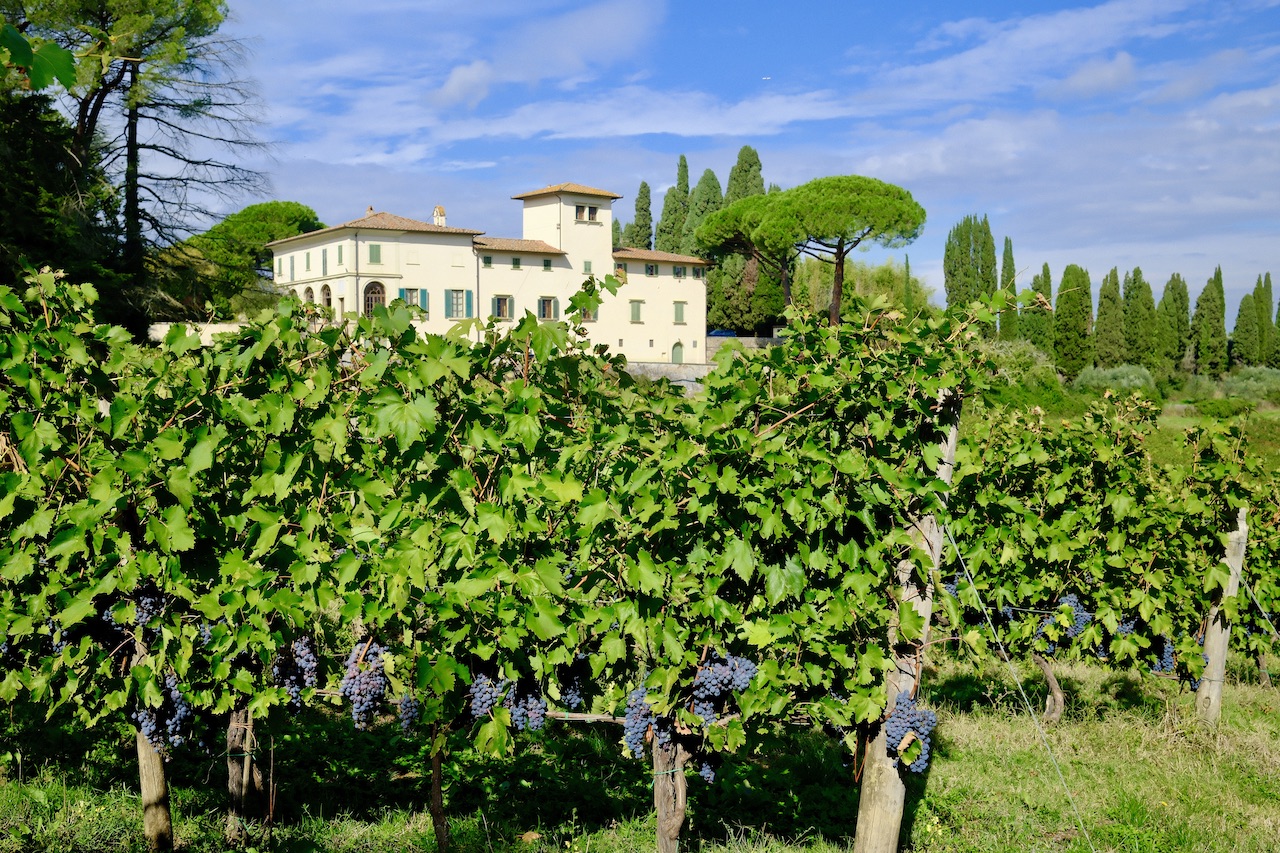Wine Tours in Tuscany - About Angie - +39 3333185705 - angie.chianti@gmail.com
The Frescobaldi family started producing and selling wine to the Courts of Europe at the beginning of the XIV century, but their wine-making vocation started much earlier and is deeply rooted in the most ancient of the six estates that the family owns throughout Tuscany: the Tenuta Castiglioni in Montespertoli.
The property stands on the ancient Via di Castiglioni, built by the Romans to connect the north of Tuscany to Rome, in the Val di Pesa, 20 km south west of Florence.
The story of this noble family began here, on the gentle hills of the Chianti Colli Fiorentini area, in the year 1000 A.D.: an endless passion and a worthy commitment to wine- making and agriculture.
The first document attesting to the existence of the Tenuta Castiglioni dates back to 1092, whilst Berto Frescobaldi’s will, in 1331, mentions the presence of “lands with vineyards” on the estate. Another important document about Castiglioni is the geographical map painted by Ludovico Buti in 1509, and preserved in the Uffizi Museum in Florence.
148 of the 513 hectares making up the Tenuta Castiglioni are vineyards and the grape varieties planted here are Cabernet Sauvignon, Merlot, Cabernet Franc and Sangiovese. They benefit from a mild climate, gently caressed by the constant sea breezes that soften the temperature, both in summer and winter, cleansing the sky and intensifying the exposure to the sun. The soil is rich in clay guaranteeing a generous amount of water retention that prevents the vines suffering from drought, allowing the grapes to ripen harmoniously.
The wines produced here have an intense red color, with a clear fruity flavor and a graceful, intense and harmonious structure.
The medieval town of Montespertoli, one of the capitals of Tuscan Wine, is nestled in the typical Chianti landscape, not far from the Via Francigena (the historical route that connects England to Rome, passing through France, Switzerland and central Italy) and that nowadays crosses the Montespertoli Chianti -Wine Route, an amazing itinerary that passes through medieval hamlets, castles, and local food and wine specialities.
Chianti wine is definitely the main attraction of Montespertoli: here you can visit a dedicated Wine Museum, and the unmissable Mostra del Chianti Montespertoli, a historical wine festival that has been running between May and June for the last 60 years, attracting thousands of wine lovers.
The Tenuta Castiglioni produces three wines. You can try them here, as well as the other wines from the Frescobaldi estates; Laudemio, the Frescobaldi extra virgin olive oil, and many other local products.
The three wines produced here are:
Giramonte
Giramonte the estate’s top of the range wine which is produced in small quantities
Classification: Toscana IGT
Grape varieties: Merlot with a small percentage of Sangiovese
Tasting notes: A bright, intense ruby red wine with fruity scents of blackberry and a herbal scent of thyme on top and deeper notes of coffee and cocoa. Pleasantly dry tannins in the mouth yield to a fine, lingering taste of hazelnut with hints of coffee on the nose.
Food pairings: roasted, grilled or barbecued beef as well as soft, medium-mature cheese.
Tenuta Frescobaldi
Tenuta Frescobaldi is the most popular wine
Classification: Toscana IGT
Grape Varieties: Cabernet Sauvignon, Merlot, Cabernet Franc, Sangiovese
Tasting notes: ruby red color, fruity and intense with elegant bouquet of red berry fruits followed by hints of toasted cocoa, coffee and tobacco and light notes of violet and rose. Deep, fresh, and persistent on the palate.
Food pairings: extremely enjoyable with meat/robust first and second courses
Castiglioni Chianti
Castiglioni Chianti is a basic Chianti everyday wine
Classification: Chianti DOCG
Grape Varieties: Sangiovese, Merlot
Tasting notes: Intense red, clear color with purple tones. Strong notes of strawberry and raspberry on the nose that blend perfectly with floral scents of rose and almond candy cakes. Well balanced and winy in the mouth, persistent finish on the palate.
Food pairings: Savory food, especially meat first courses.





